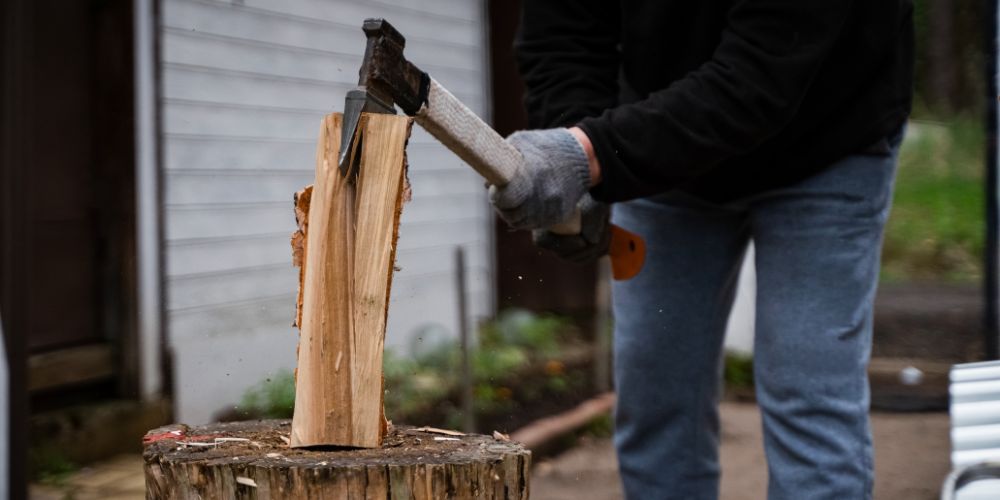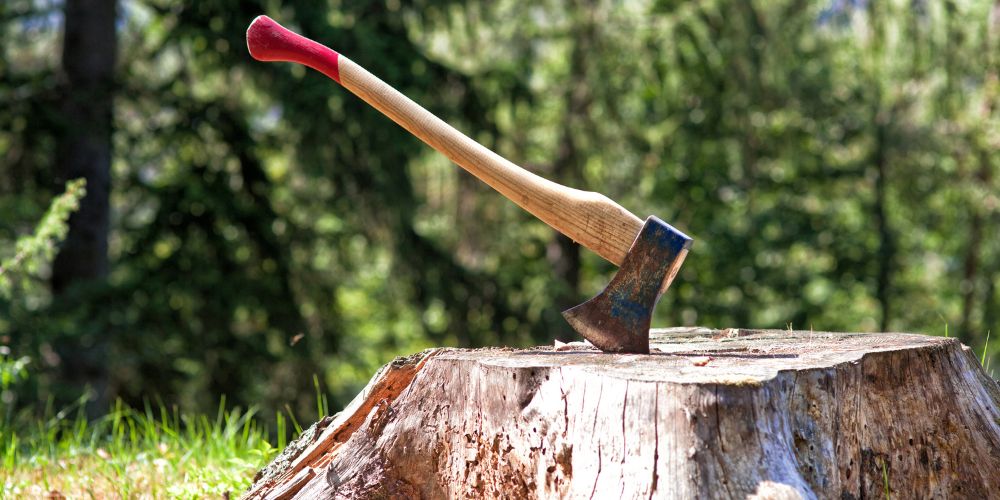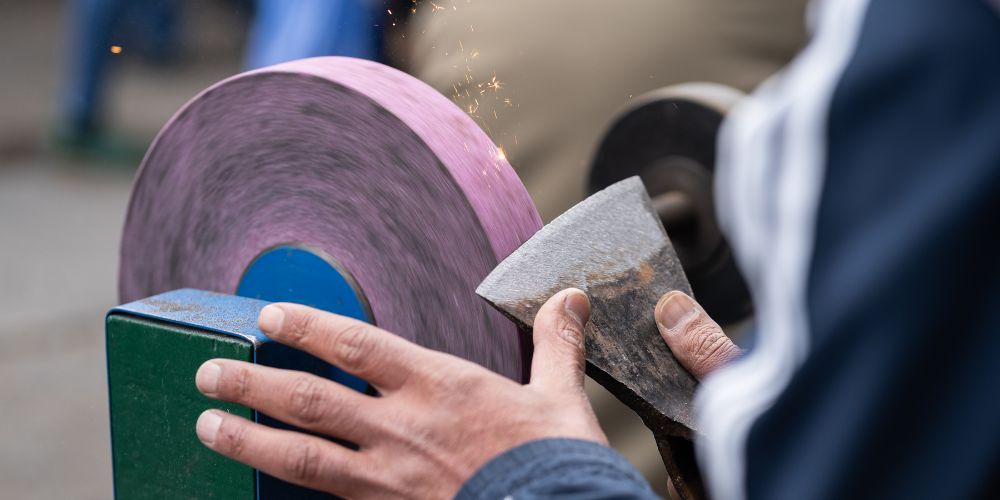Overview
Knowing how to correctly sharpen your splitting axe is essential if you want to keep it in peak condition. The angle of the edge, the kind of sharpening tool to use, the frequency of sharpening, and good technique are the main things to think about when sharpening a splitting axe. Your splitting axe will always be sharp and ready to use if you abide by these guidelines.
How to Sharpen a Splitting Axe
Angle of the edge
Your splitting axe’s edge angle will determine how effectively it can cut through wood. A splitting axe should be used at an angle of about 25 degrees. To accomplish this, grind the axe’s edge at a constant angle using a sharpening stone or file.
To ensure that the blade cuts precisely, it is crucial to keep the angle constant on both sides of the blade. Make sure the angle is constant along the entire blade by taking your time.
Type of sharpening tool to use
Sharpening stones, files, and grinders are a few examples of sharpening implements that can be used to maintain the edge of a splitting axe. Make sure the instrument you select is made of a hard abrasive material, such as ceramic or diamond.
To avoid overheating and ensure a smooth sharpening operation, you can additionally lubricate the sharpening tool with water or honing oil.
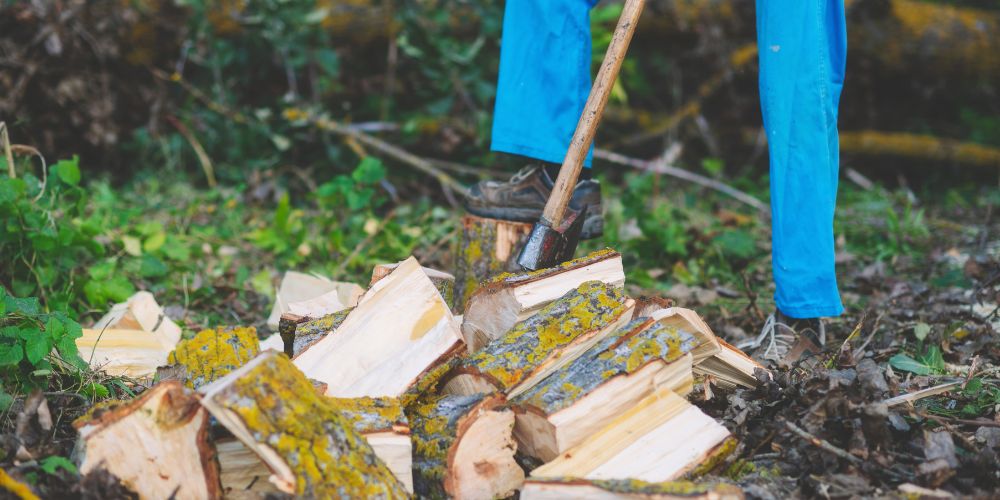
Frequency of sharpening
Depending on how frequently you use your splitting axe, you should sharpen it more frequently. You might need to sharpen your axe every few weeks or even every few days if you use it frequently.
You may only need to sharpen your axe once or twice a year if you only use it sporadically. But you should constantly check your axe frequently, and sharpen it if you find that it’s getting dull or difficult to use. This will help keep the edge sharp and increase the lifespan of your axe.
Proper technique
Start by clamping or vice-securing your splitting axe to keep it from moving while you work on sharpening it. Next, start grinding the blade’s edge at the proper angle using your sharpening tool. Throughout the process, be sure to apply even pressure and keep the same angle.
By running your finger along the blade’s edge and feeling for any burrs or rough areas, you may assess your progress. After sharpening the blade on both sides, use an honing stone to remove any burrs that are still present and to give the edge one more shine.
Common Mistakes to Avoid
- Using the wrong angle: Using the wrong angle can lead to an edge that is too blunt or too thin, making it difficult to cut through wood efficiently. Make sure to use the correct angle for your axe, which is typically around 25 degrees.
- Overheating the blade: Overheating the blade can cause it to lose its temper, which can make it brittle and prone to chipping or breaking. To avoid overheating, use a lubricant such as honing oil or water to cool the blade while sharpening.
- Uneven sharpening: Failing to maintain a consistent angle and pressure while sharpening can result in an uneven edge, which can make it difficult to cut straight and true. Take your time and make sure to sharpen both sides of the blade evenly.
- Neglecting the handle: While sharpening the blade is important, it’s also essential to inspect and maintain the handle of your axe. Check for any cracks, splits, or signs of wear and tear, and replace the handle if necessary.
- Rushing the process: Sharpening a splitting axe requires patience and attention to detail. Rushing the process can lead to a poor result, so take your time and make sure to follow the correct technique.
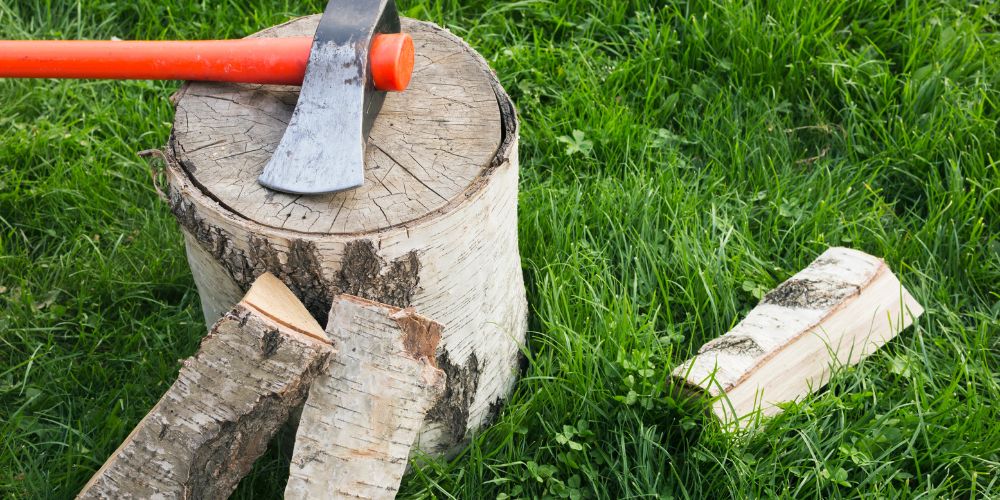
FAQs
1. How do I know if my splitting axe needs sharpening?
You can tell if your splitting axe needs sharpening by examining the blade. If it has nicks, chips, or is dull, it’s time to sharpen it. A dull blade will make splitting wood more difficult and can be dangerous to use.
2. What is the best way to sharpen a splitting axe?
The best way to sharpen a splitting axe is to use a file or grinder to remove any nicks or burrs and then use a sharpening stone to hone the edge to a razor-sharp finish.
3. How often should I sharpen my splitting axe?
It depends on how often you use your axe and the condition of the blade. If you use your axe regularly, it’s a good idea to sharpen it every few weeks. If you use it less often, you can sharpen it every few months.
4. Can I sharpen my splitting axe myself or should I take it to a professional?
You can sharpen your splitting axe yourself with a few basic tools, but if you’re not comfortable doing it, it’s always best to take it to a professional.
Conclusion
To keep the blade on a splitting axe sharp and functional, regular sharpening is a crucial duty. You’ll need a file or grinder to remove burrs and nicks from the splitting axe’s edge, as well as a sharpening stone to polish the edge to a razor-sharp finish.
To prevent accidents and make splitting wood easier, it’s crucial to constantly sharpen the axe and check the blade for signs of wear and tear. It’s usually preferable to have your axe sharpened by a pro if you don’t feel confident doing it yourself.
For all your wood-splitting needs, a sharp and efficient tool is what you’ll get if you use the suggestions provided above to learn how to sharpen a splitting axe.
